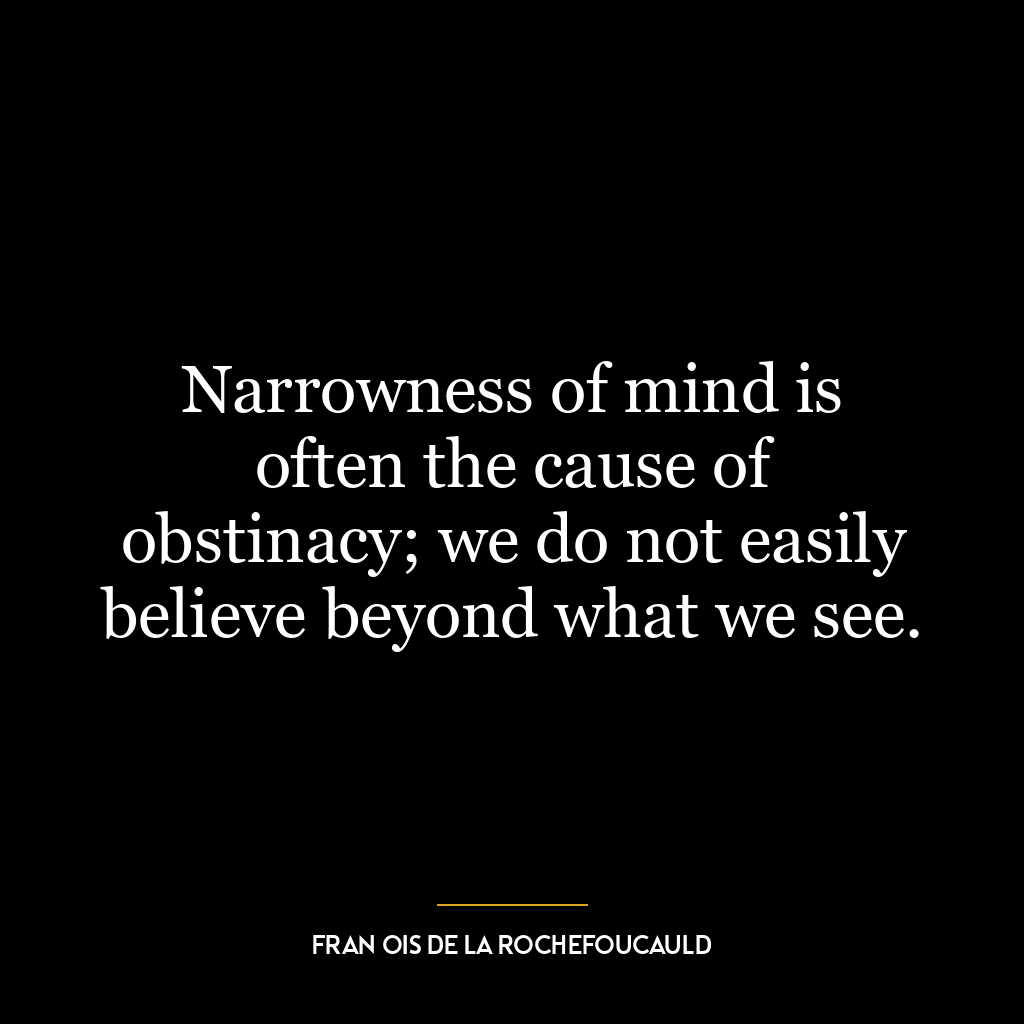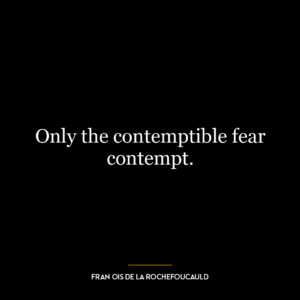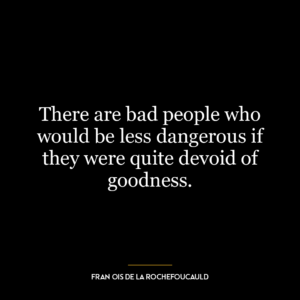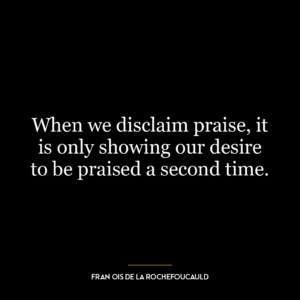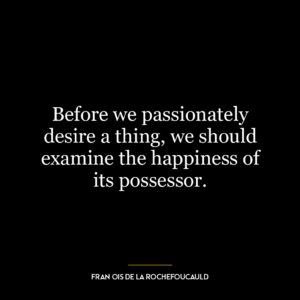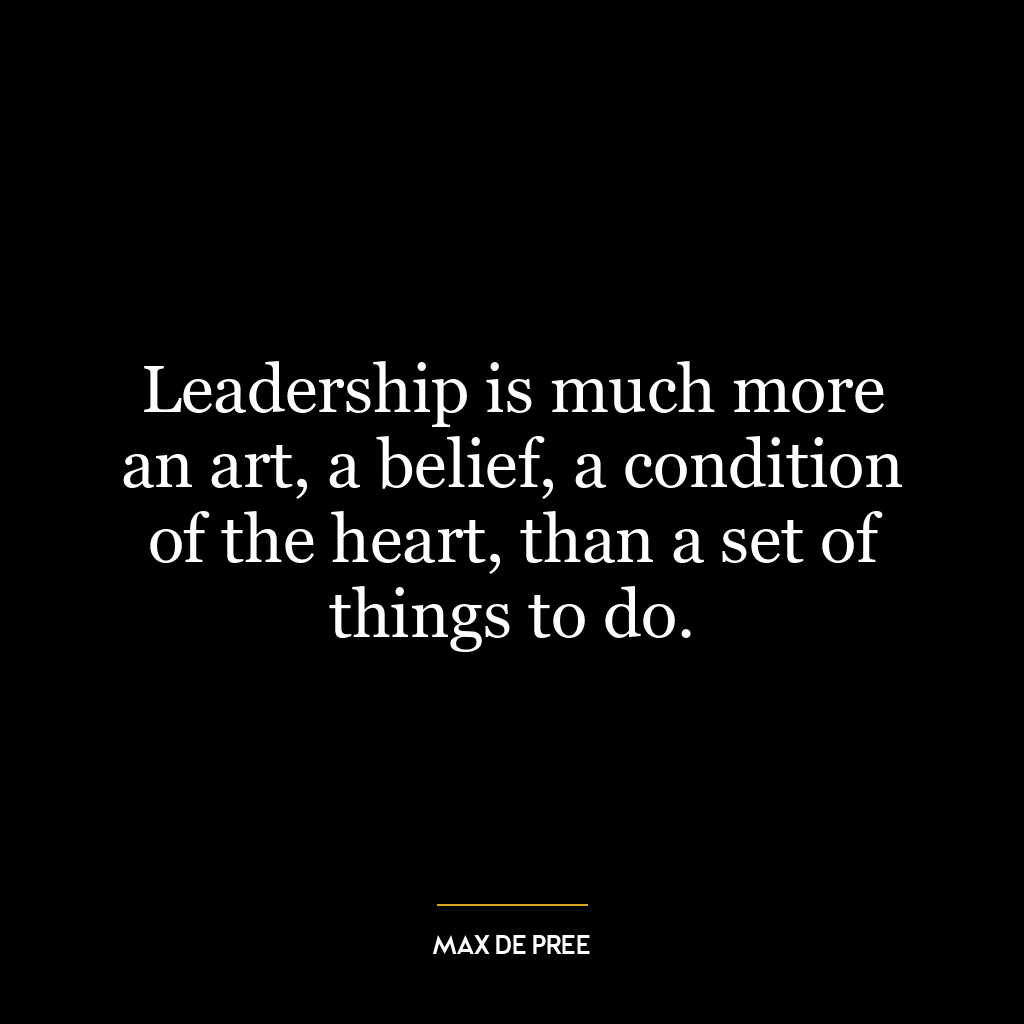Narrowness of mind is often the cause of obstinacy; we do not easily believe beyond what we see.
This quote suggests that a narrow mindset or limited thinking often leads to stubbornness. When we restrict our mind to a certain perspective or limit our understanding to only what we can see or perceive, we become rigid and inflexible in our beliefs. This rigidity prevents us from accepting or even considering perspectives that are different from our own, leading to obstinacy.
The "seeing is believing" part of the quote implies that we often only believe in things that we can tangibly experience or observe. While this approach can be practical in some cases, it also restricts our ability to understand abstract concepts or ideas that are beyond our immediate perception. It confines our understanding of the world and hinders our intellectual growth.
Applying this idea to today’s world, we can see how it applies to various social and political issues. For instance, people often form rigid opinions based on their own experiences or perspectives, refusing to consider alternate viewpoints. This can lead to polarization and conflict.
In terms of personal development, this quote underscores the importance of open-mindedness. To grow as individuals, we need to be willing to step out of our comfort zones, challenge our preconceived notions, and consider different perspectives. By doing so, we can broaden our understanding, become more adaptable, and improve our ability to communicate and collaborate with others.
Furthermore, in the era of information overload, it’s crucial not to accept everything at face value. Critical thinking and the ability to question, analyze, and interpret information are essential skills that can prevent us from falling into the trap of obstinacy and narrow-mindedness.

